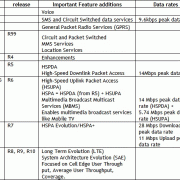From Classrooms to Economies, INTEL White Paper Says eLearning is Making a Postive Impact
Intel’s recently released white paper entitled “The Positive Impacts of Learning”, provides new research data that concludes that eLearning is improving the quality and effectiveness of education. An updated version of the 2009 paper, it offers a comprehensive glimpse at some key research findings aimed at helping educational leaders identify relevant eLearning benefits to make well-informed decisions for developing eLearning strategies.
Intel realizes, along with much of the ICT sector, that with an endless array of both failed and successful examples of implementation strategies for eLearning — and few published results of strictly controlled experimental studies — it is difficult for researchers to produce valid data that can actually prove the efficacy of improving the quality of education through the use of ICT. By comparing data from a spectrum of different studies conducted in the US and various countries, the paper draws several important conclusions supporting the theory that eLearning is in fact positively impacting not only students and teachers, but also their families, communities, societies, and economies.
Students:
Research has shown that there are three major areas of student learning affected by eLearning: engagement, motivation and attendance. Teachers that were surveyed or consulted in many of the studies reported that student motivation was improved the most out these three areas, as much as 76% of low achieving students involved in 1:1 computing programs in one teacher survey.
- Access:
Access to technology is a large factor in student performance levels. Studies have found that 1:1 computing programs are much more beneficial than computer labs. Through analyzing 13 different countries, researchers have found that students with easy access to ICT in the classrooms or involved in 1:1 programs are significantly more likely to use ICT than students who only had access to computer labs. Not only do these students use the devices more, but another study showed that academic scores and attendance improved significantly.
- Quality of Learning:
When deciding how deeply the technology should be integrated into the learning process, Intel concludes that the more opportunities and easier accessibility that students have to the technology, the greater the effects. Intel has found that student-centered teaching methodologies coupled with blended learning, a strategy that mixes different educational environments, is the most effective way of ensuring that students fully value and explore all learning possibilities available through the technology. With similar advantages found in differentiated instruction methods, students are then able to learn at their own pace and adopt strategies to develop skills needed for self-regulated learning.
- Performance:
The white paper suggests that various aspects of student performance, particularly 21st century skills needed to compete in a developing global economy, are significantly improved through the use of ICT. For example, “in one two-year study of upper elementary classrooms with 1:1 computing access, students outperformed non-laptop students on English Language Arts (ELA) literary response and analysis and writing strategies, (Suhr et al., U.S.).”
Teachers:
- Access:
Research shows that giving teachers computers or helping them to purchase them is incredibly valuable to these programs. Through boosting teacher confidence in the validity of the information that they are teaching and offering various ways to plan lessons efficiently, teachers can become empowered through technology. Intel suggests that by creating learning management systems, software applications for managing online learning, and training teachers how to use them, educators can share and contribute to a growing body of open educational resources (OER).
- Performance:
Besides visible improvements in the quality of student learning, teachers management skills improve as well. Better organizational skills and levels of productivity were reported in most of the studies referenced in the report. In one study, “68 percent of teachers with 1 to 3 years of experience say that technology has increased their effectiveness by making them more productive, (Project Tomorrow, U.S.),”
Society and Community:
A number of studies suggest that eLearning is creating benefits for students across all social classes but that disadvantaged, at-risk, and disabled groups of students benefit more. For example, “the Texas Technology Immersion Pilot showed that economically disadvantaged students reached proficiency levels matching the skills of advantaged control students, (Texas Center for Educational Research, U.S.).” At the broader social level, Intel suggests that by improving basic education, eLearning can indirectly reduce levels of criminal activity and increase students’ involvement in improving their communities.
As policy makers use eLeaning to improve basic education, they are focusing on the larger effects on the economy. Emphasizing this fact, the report highlights the creation of more job opportunities and developing a workforce better able to fill these jobs. For example, “The OECD estimates the demand for employees with technology skills is growing at a pace that most labor markets struggle to satisfy, stating that approximately 16 million people are employed by the ICT sector, and representing approximately 6 percent of the OECD business sector employment. Furthermore, the estimate is that this sector is growing faster than most other business sectors.”
The full report and bibliography for the studies referenced above can be accessed here.










































